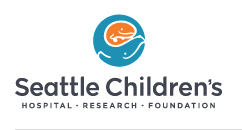Effects of Two Dosing Regimens of Bosentan in Children With Pulmonary Arterial Hypertension
| Status: | Completed |
|---|---|
| Conditions: | High Blood Pressure (Hypertension) |
| Therapuetic Areas: | Cardiology / Vascular Diseases |
| Healthy: | No |
| Age Range: | Any - 12 |
| Updated: | 12/13/2017 |
| Start Date: | March 8, 2011 |
| End Date: | August 19, 2013 |
An Open-label, Prospective Multicenter Study to Assess the Pharmacokinetics, Tolerability, Safety and Efficacy of the Pediatric Formulation of Bosentan Two Versus Three Times a Day in Children With Pulmonary Arterial Hypertension
The primary objective of AC-052-373 was to assess the pharmacokinetic (PK) profile of two
dosing regimens of the pediatric formulation of bosentan in children with pulmonary arterial
hypertension (PAH) <12 years of age.
dosing regimens of the pediatric formulation of bosentan in children with pulmonary arterial
hypertension (PAH) <12 years of age.
Inclusion Criteria:
1. PAH diagnosis confirmed with right heart catheterization (RHC):
- Idiopathic or heritable PAH, or
- Associated PAH persisting after complete repair of a congenital heart defect (PAH
has to be persistent for at least 6 months after surgery) or
- PAH-Congenital Heart Disease (PAH-CHD) associated with systemic-to-pulmonary
shunts (after global amendment dated 09 May 2012)
2. World Health Organization functional Class (WHO FC) I, II or III
3. Male or female ≥ 3 months and < 12 years of age (maximum age at randomization is 11.5
years)
4. Body weight ≥ 3.5 kg
5. Peripheral oxygen saturation (SpO2) ≥ 88% (at rest, on room air)
6. Baseline PAH-therapy (Calcium channel blocker, bosentan, prostanoid, phosphodiesterase
type-5 inhibitor) if present, has to be stable for at least 3 months prior to
screening. During the study, all background treatments should remain stable
7. Signed informed consent by the parents or legal representatives
Exclusion Criteria:
1. PAH etiologies other than listed above
2. Non-stable disease status
3. Need or plan to wean patient from intravenous epoprostenol or intravenous or inhaled
iloprost
4. Systolic blood pressure < 80% of the lower limit of normal range
5. Aspartate aminotransferase and/or alanine aminotransferase values > 1.5 times the
upper limit of normal range.
6. Moderate to severe hepatic impairment, i.e., Child-Pugh Class B or C
7. Hemoglobin and/or hematocrit levels < 75% of the lower limit of normal range.
8. Known intolerance or hypersensitivity to bosentan or any of the excipients of the
dispersible Tracleer tablet
9. Treatment with forbidden medication within 2 weeks or at least 5 times the half-life
prior to randomization, whichever is the longest:
- Glibenclamide (glyburide)
- Cyclosporin A
- Sirolimus
- Tacrolimus
- Fluconazole
- Rifampicin (rifampin)
- Ritonavir
- Co-administration of CYP2C9 inhibitors (e.g., amiodarone, voriconazole) and
moderate/strong CYP3A4 inhibitors (e.g., amprenavir, erythromycin, ketoconazole,
diltiazem, itraconazole)
- Endothelin receptor antagonists (ERAs) other than bosentan
10. Treatment with another investigational drug within 1 month prior to randomization or
planned treatment
We found this trial at
6
sites
Click here to add this to my saved trials
Click here to add this to my saved trials
Click here to add this to my saved trials
New York, New York 10032
Click here to add this to my saved trials
Seattle Children's Hospital Seattle Children’s Hospital specializes in meeting the unique physical, emotional and developmental...
Click here to add this to my saved trials
111 Michigan Ave NW
Washington, District of Columbia
Washington, District of Columbia
(202) 476-5000

Childrens National Medical Center As the nation’s children’s hospital, the mission of Children’s National Medical...
Click here to add this to my saved trials
